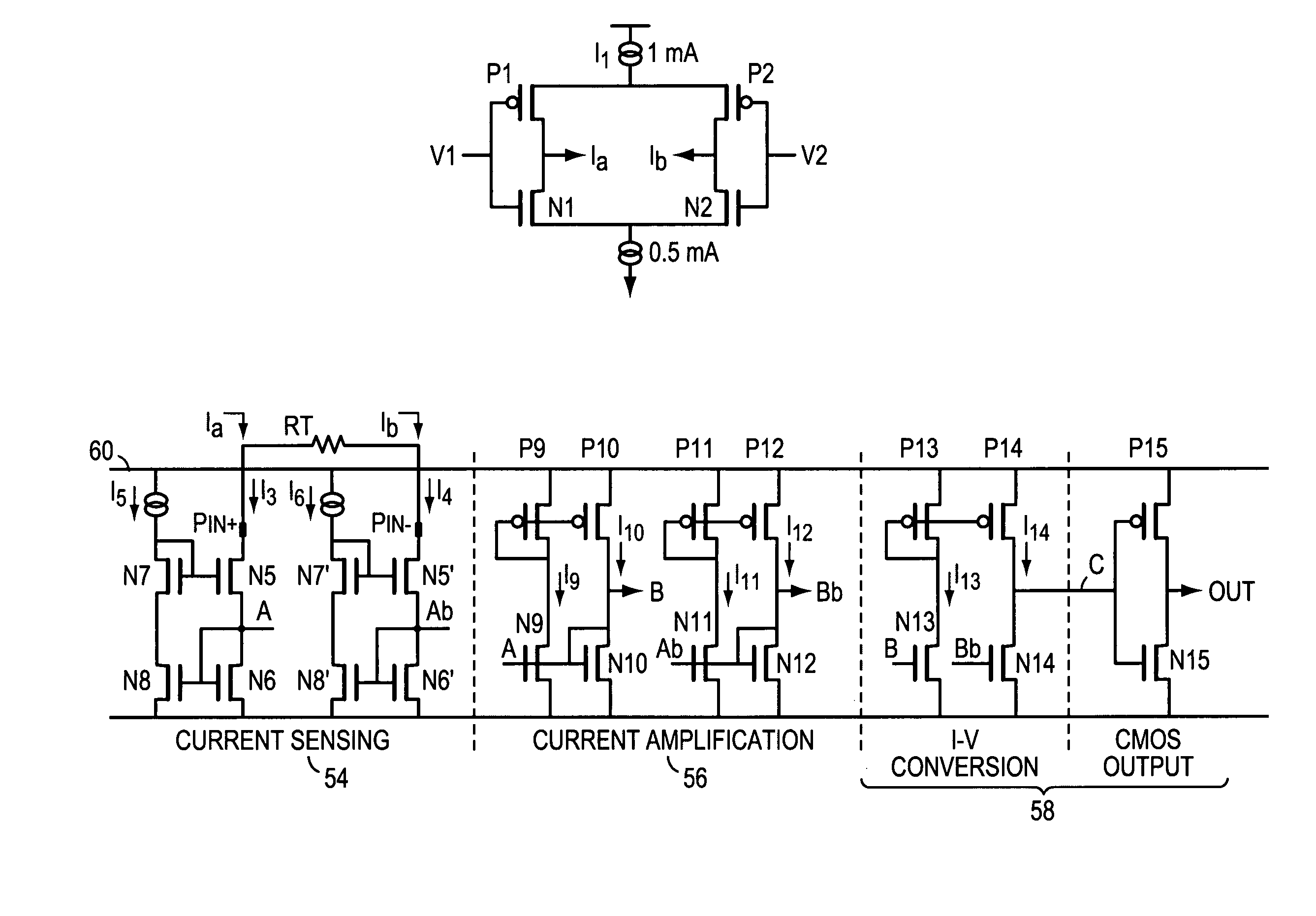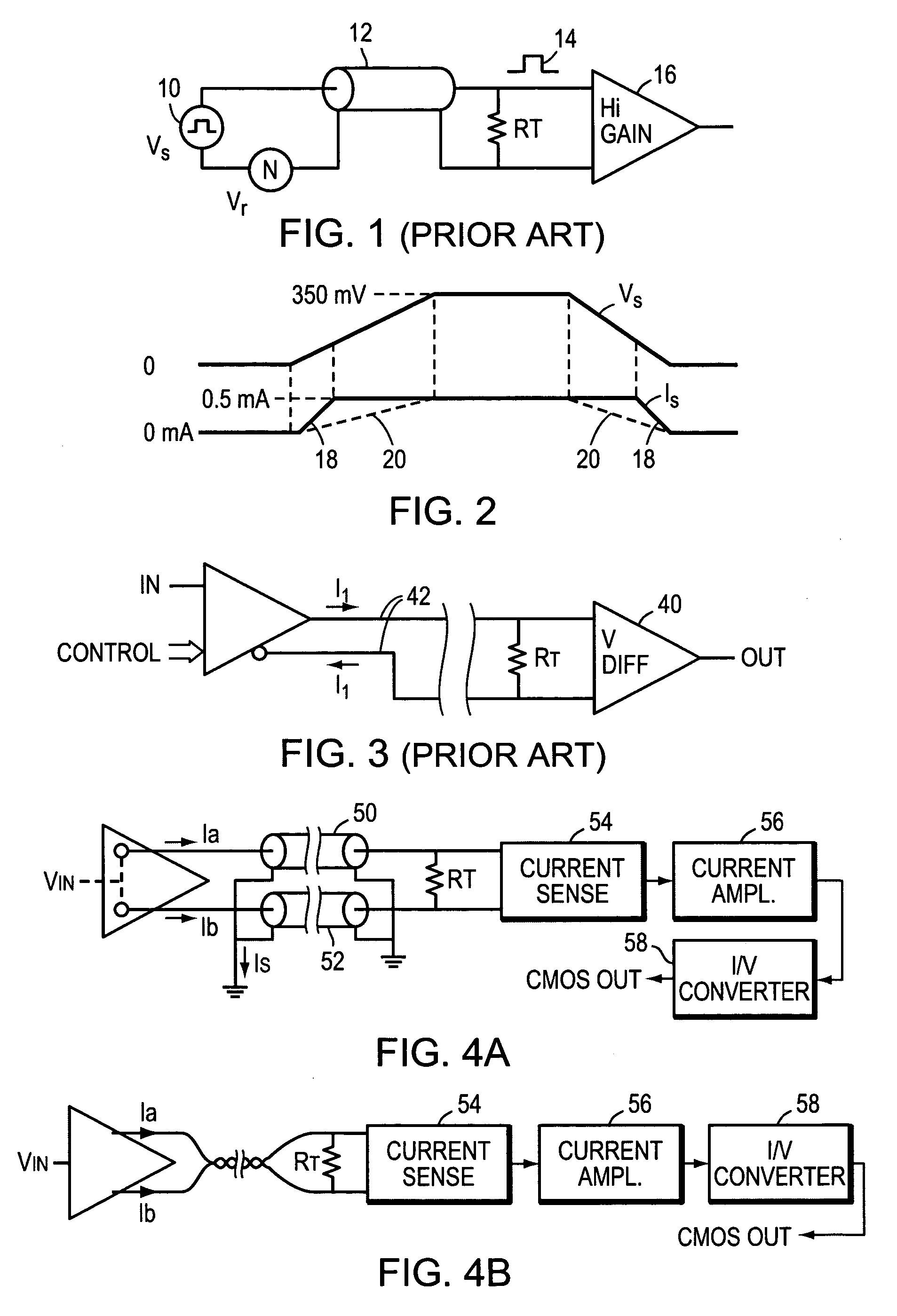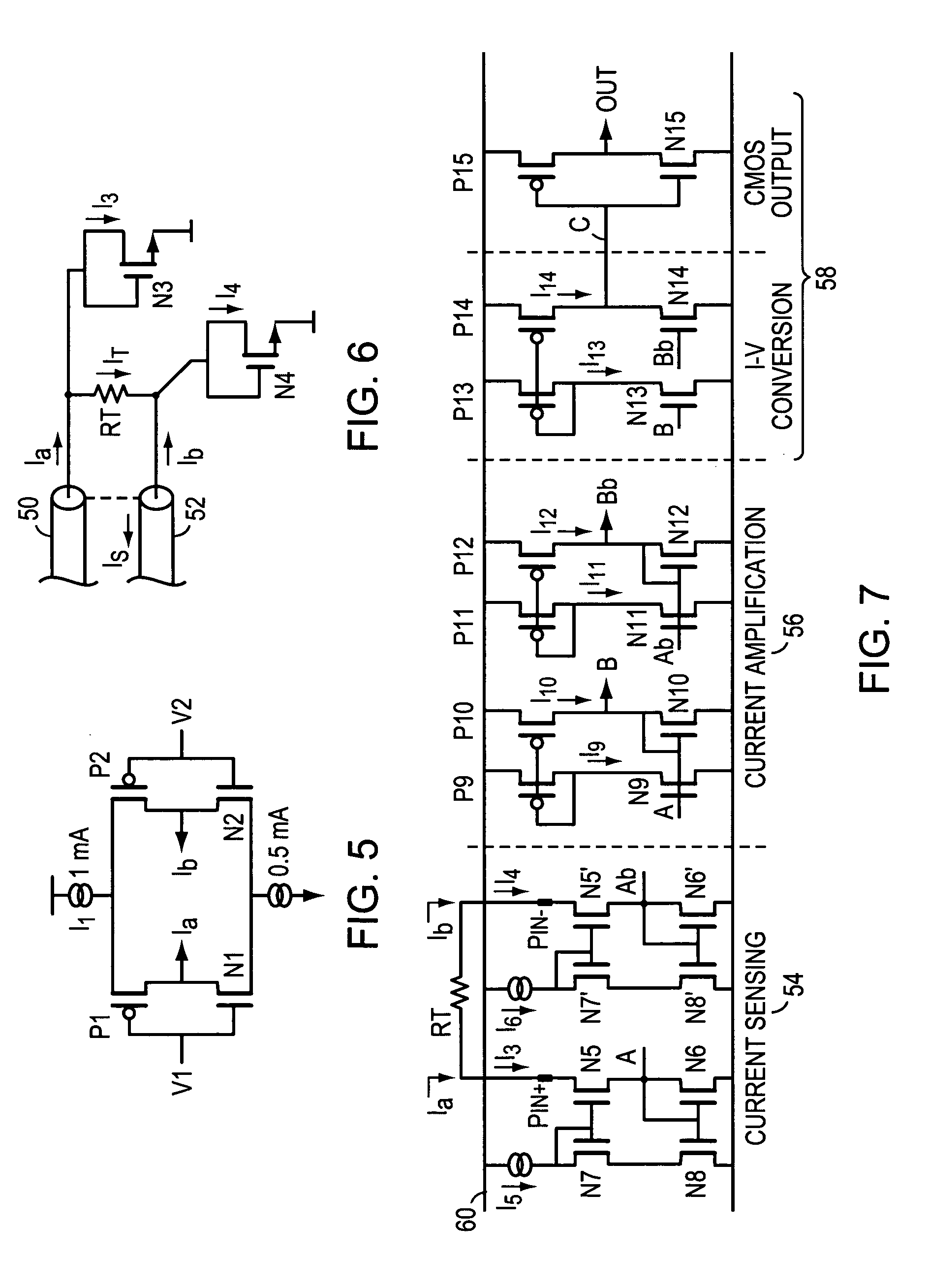Current transfer logic
a current transfer logic and transmission line technology, applied in logic circuit coupling/interface arrangement, baseband system details, pulse techniques, etc., can solve the problems of limiting the lvds system, noise and the loss of 250 mv represents a noise margin at the driver and attenuation. , to achieve the effect of speed, power, noise and jitter
- Summary
- Abstract
- Description
- Claims
- Application Information
AI Technical Summary
Benefits of technology
Problems solved by technology
Method used
Image
Examples
Embodiment Construction
[0027]FIG. 4A shows a diagram of a preferred embodiment of the present invention. An input signal, Vin controls and selects output current signals Ia and Ib that are driven into the transmission lines 50 and 52. In one logic state, Ia is a positive current out into a first transmission line 50 and Ib is a negative current in from a second transmission line 52. In the opposite logic state, Ia is a negative current from the first transmission line 50 and Ib is a positive current into the second transmission line 52. In another preferred embodiment, it is possible to have no current driven into either transmission line.
[0028]If each transmission line has a characteristic impedance of 50 ohms, a 100 ohm Rt is placed across the distal ends of the signal conductors and serves to terminate both lines. Of note is that Ia and Ib are not equal to each other so that there will be a return current through the shield. Also, since Rt is across the distal ends of both transmission lines, both ends...
PUM
 Login to View More
Login to View More Abstract
Description
Claims
Application Information
 Login to View More
Login to View More - R&D
- Intellectual Property
- Life Sciences
- Materials
- Tech Scout
- Unparalleled Data Quality
- Higher Quality Content
- 60% Fewer Hallucinations
Browse by: Latest US Patents, China's latest patents, Technical Efficacy Thesaurus, Application Domain, Technology Topic, Popular Technical Reports.
© 2025 PatSnap. All rights reserved.Legal|Privacy policy|Modern Slavery Act Transparency Statement|Sitemap|About US| Contact US: help@patsnap.com



